Welcome to Curious Creative Spotlight, a recurring feature in which Rogue Habits interviews artists, showcasing their work as well as delving into their inspirations, creative processes, and daily life. Think your art should be featured next? Here’s how to submit.
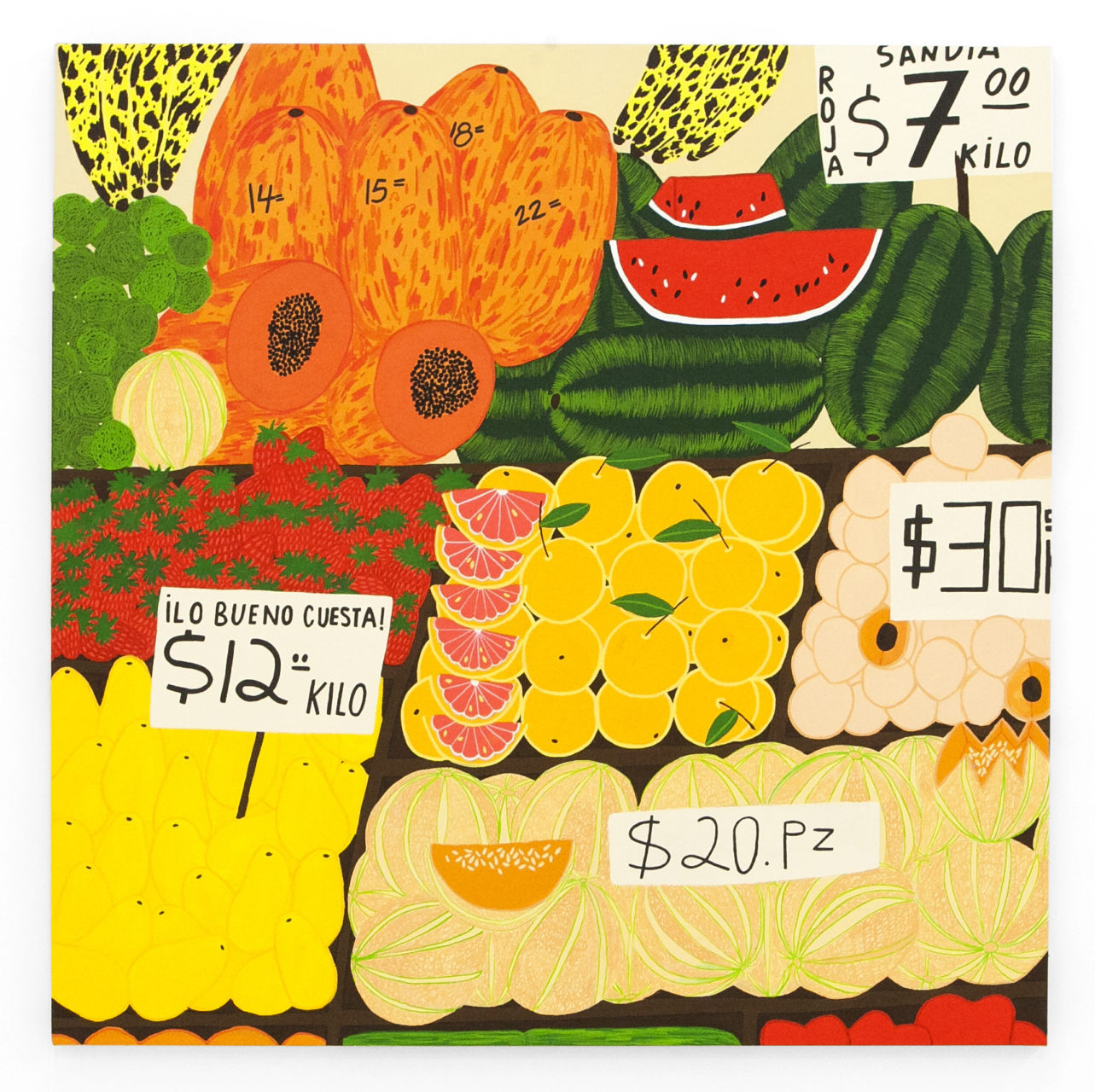
”Marchante” (Market vendor) Acrylic and Flashe on Canvas.
Based in Oakland, California, Liz Hernandez’s work primarily focuses on topics related to her identity and the narratives we place on everyday objects, reflecting the vibrant food, culture, and history of the bustling markets located in her birthplace, Mexico City. As a designer and a painter, her work exams the transformative experience of native eats from her hometown, its journey from the places that supply provisions, and how these seemingly modest objects have the power to slow down our busy lives and provide for those we love.
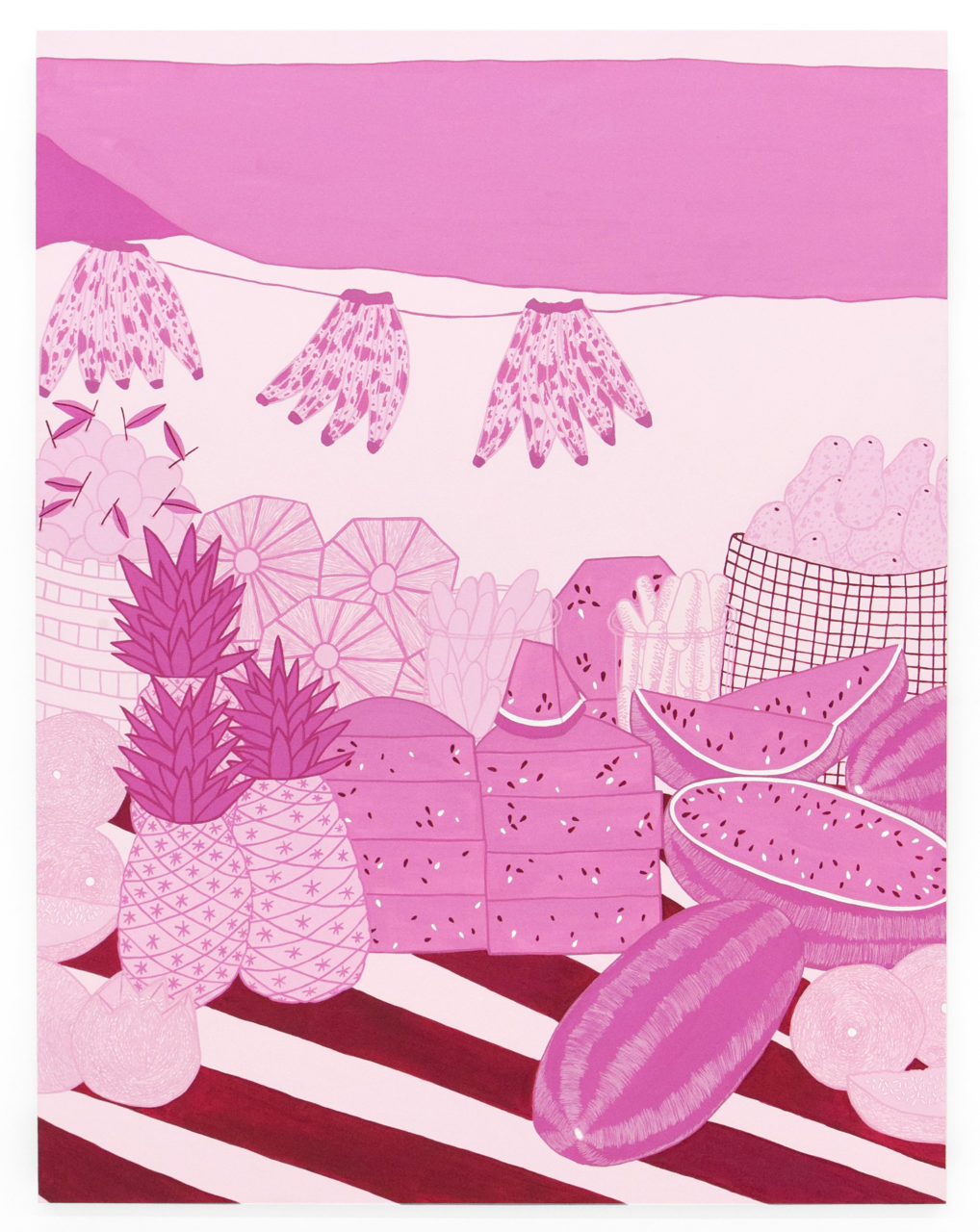
Provisions. Bajo la luz rosa del Tianguis 1 (Under the market’s pink light 1). Acrylic and Flashe on Canvas. 2018.
She (and her husband, art collaborator Ryan Whelan) recently presented a collection of paintings titled Provisions at Part2Gallery transporting viewers to the markets of Hernandez’s youth (she moved to the U.S. at 19). In this collection, we’re able to witness an array of bold fruit, vegetables, and florals swathed in rosy hues from the blush canopies overhanging vendor stations. The wash of vibrant colors, traditional foods, and distinct market signs take us into a very personal space for Hernandez; particularly as she hasn’t been able to visit her home and see her family in years due to the current political state. She paints her art as a direct connection to her bloodline, and her pieces are filled with strong statements on immigration and identity; but more on that later.
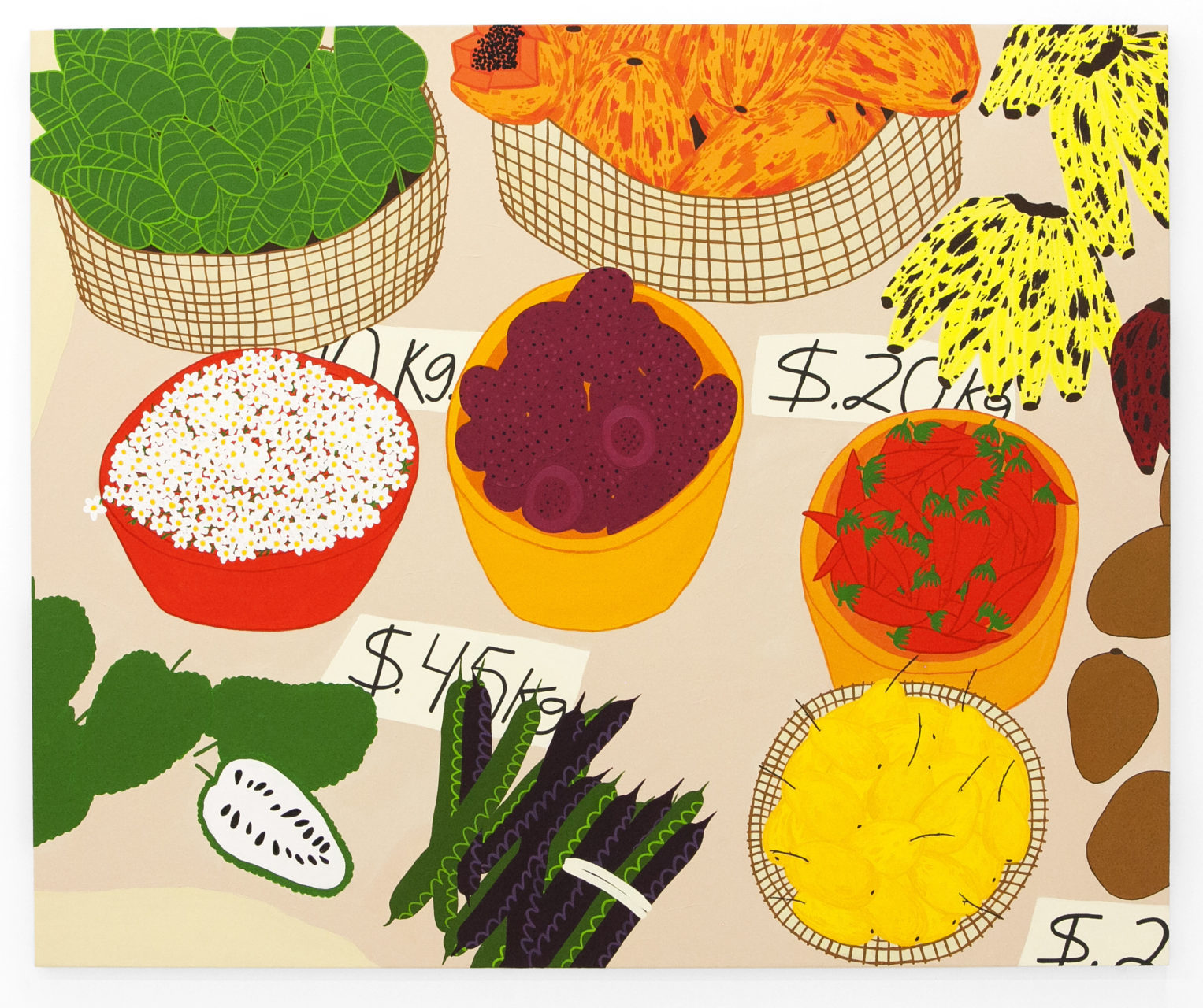
Provisions. ”Ingredientes del lstmo 1” (Ingredients from the Isthmus 1) Acrylic and Flashe on Canvas. 2018.
From Clay to Canvas
As with many, Hernandez found her craft in school. Though studying product design, she found herself gravitating towards organic materials. Her teachers tried pushing her towards the world of tech and apps, but Hernandez wanted something different. “I liked working with wood, textiles, and ceramics, and I decided to focus on something that was completely the opposite from what everyone was paying attention to,” she says. “For my senior thesis, I created a set of tools that helped people learn how to throw on the potter’s wheel. It definitely confused my teachers; they didn’t think anyone cared about pottery in 2015, but now it’s 2019 and we are oversaturated with ceramics!”
After completing her thesis, Hernandez was left with mountains of clay and no studio access. She thought, “Why don’t I use it a different way?” From that point on, she began painting with clay. She loved exploring its multiple applications as well as new ways to prepare and seal it. “Most of the work for A pot is a pot is a pot is from that era. Later I continued to explore it during Sunbath, and then in a series titled Flower Vessels.”
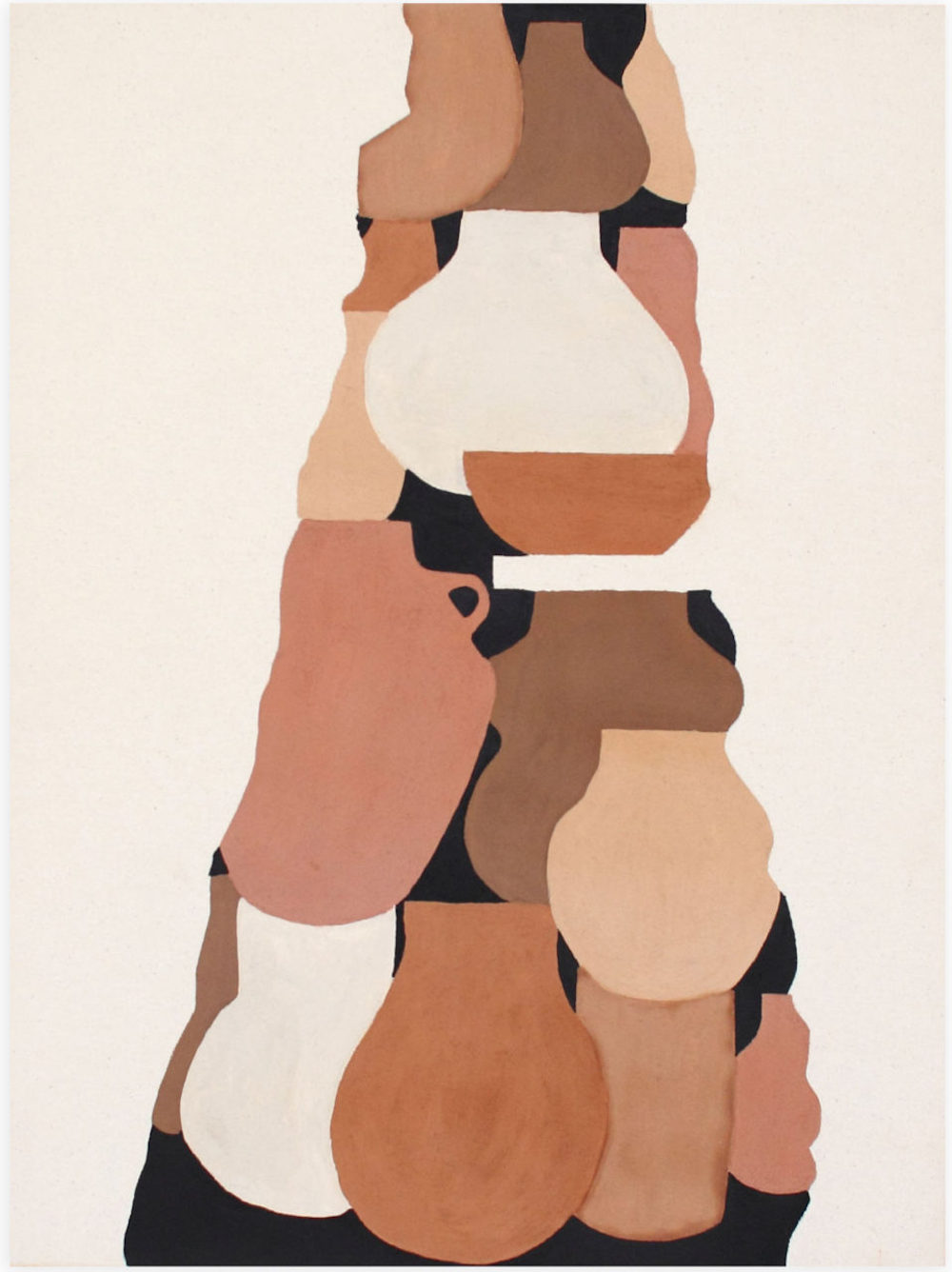
A Pot is a pot is a pot. Kiln. Clays and black gesso on canvas.
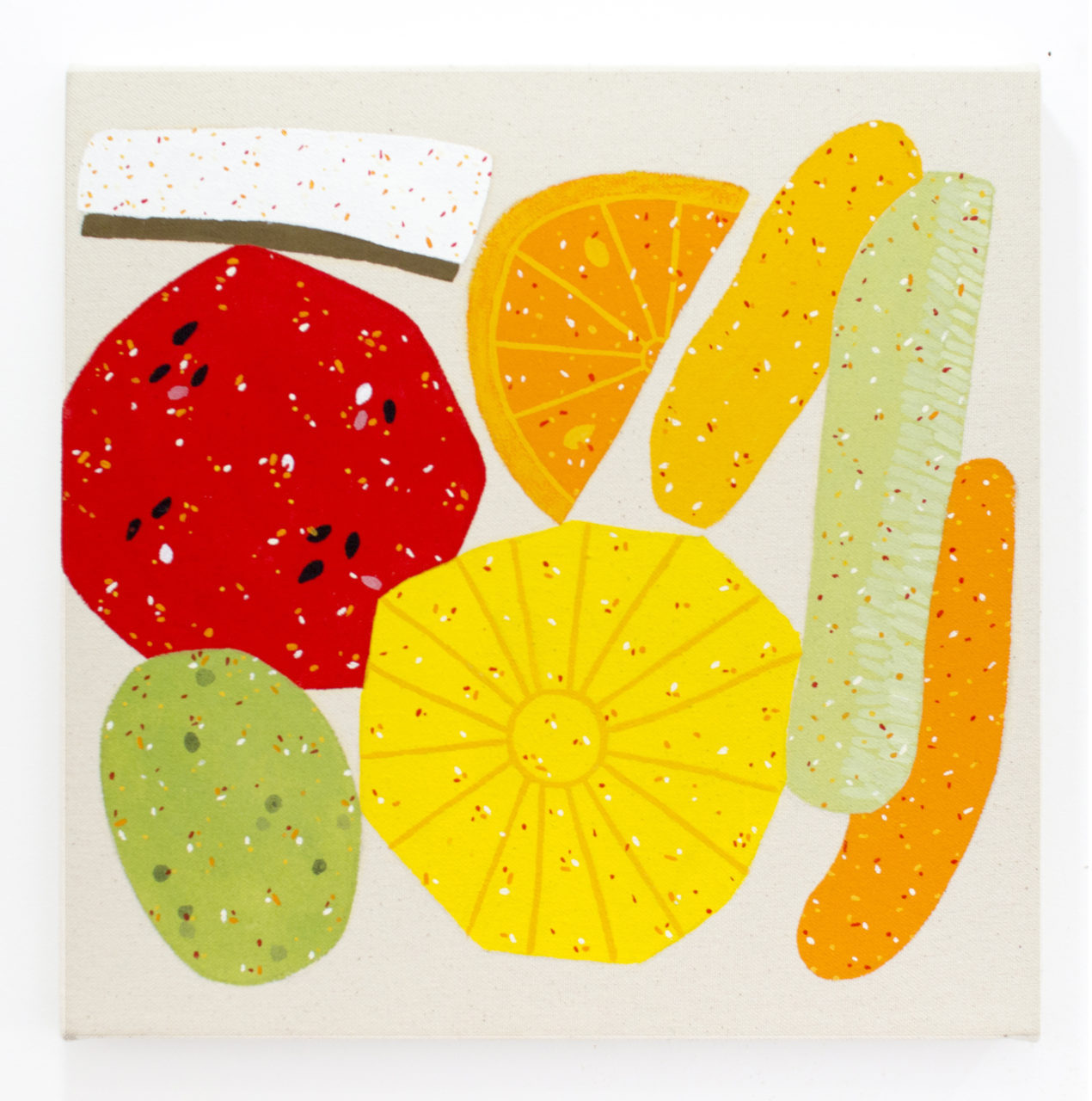
SunBath. Chile y Limón (Chili and lime). Vinyl paint on raw canvas.
Spontaneous thought can inspire an entire body of work for Hernandez. “I start sketching and slowly zero-in on what I’m trying to accomplish, why is this specific idea so interesting to me, and what’s happening around me that might be pushing me into exploring it.” Her ultimate challenge lies in deciding which piece she wants to create and finalizing the composition of each one. “I think that process for me is a hybrid between fine art and design thinking. After that, I get into production mode and stretch my canvases, mix my colors, make formulas for the colors, and begin painting—that is my favorite part.”
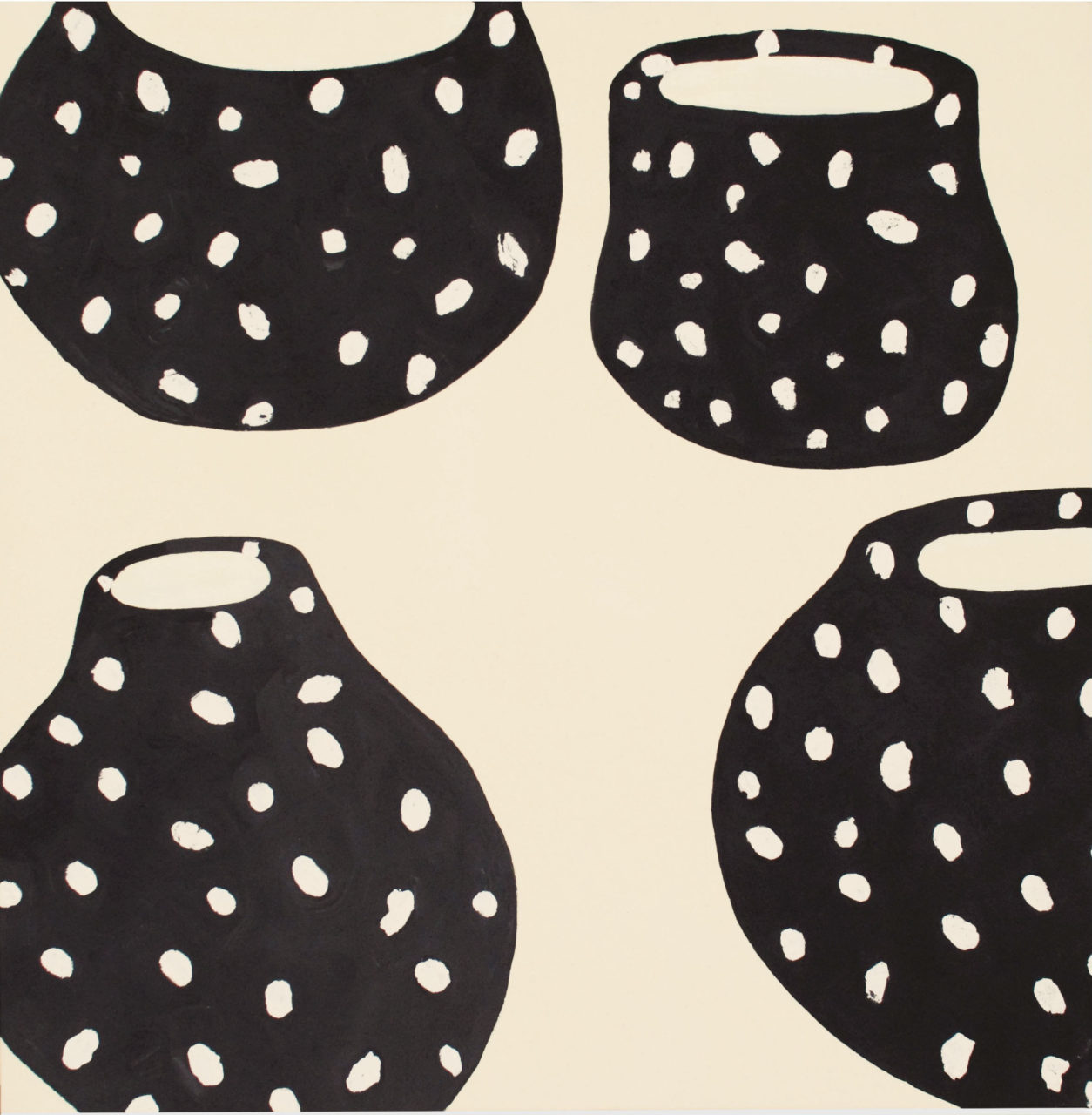
A Pot is a pot is a pot. Cuatro Ollas (4 Vessels). Black clay and porcelain clay on canvas.
As Hernandez works full time as a graphic designer and studio time is limited to nights and weekends, her current frustration lies in not having enough time to create and explore all the things she loves. However, her greatest joy is, “getting to be part of a great community of artists who are there to help you navigate the ideas and who often help me figure out what I’m trying to do. I also feel very empowered by having completed multiple exhibitions and do not feel like an impostor anymore. I know I’m fully capable of doing great things if I put my heart and mind into it.”
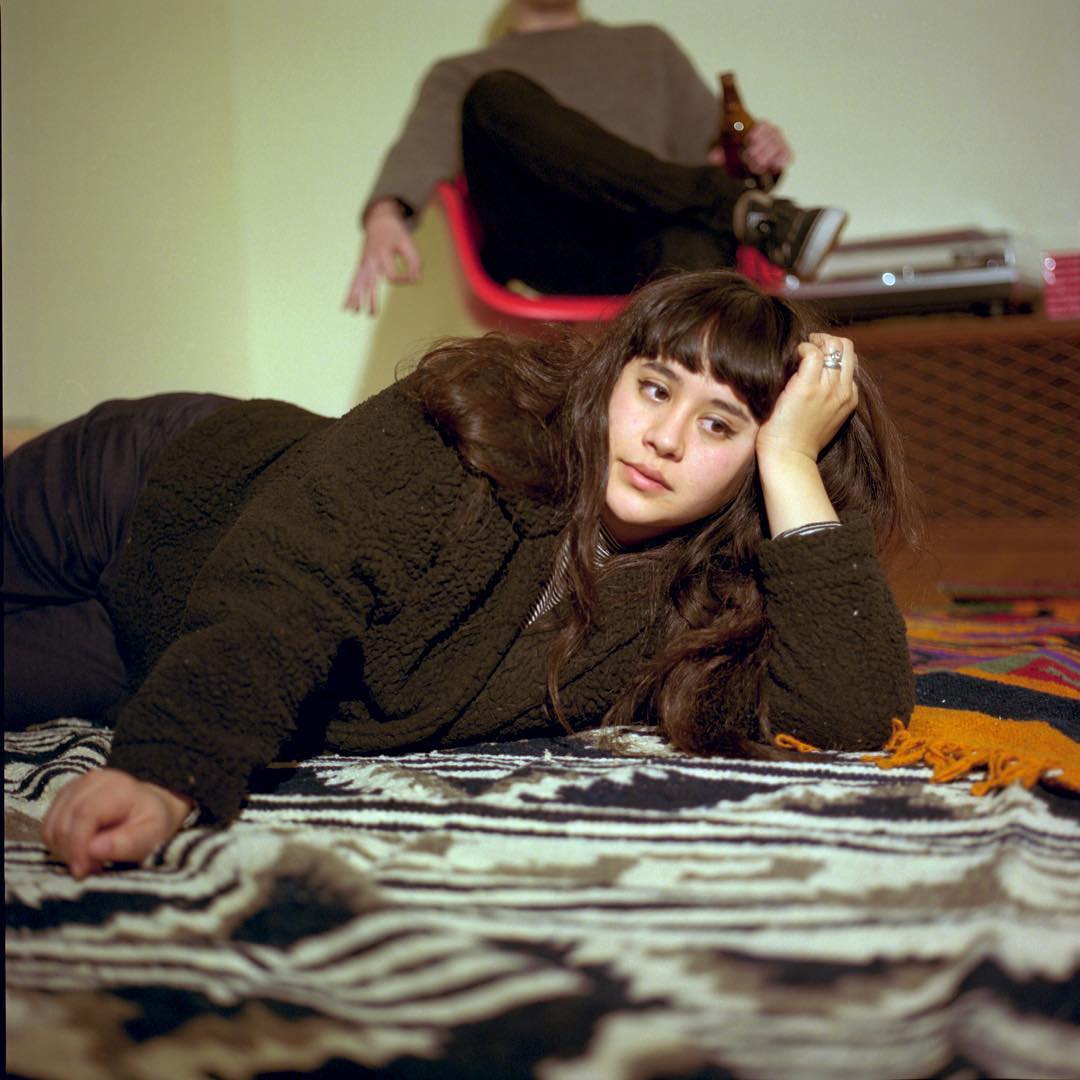
(via @prettydisappointing)
Inspirations, Identity, and Immigration
Identity plays a major role in Hernandez’s inspiration, playing with ideas around the distance that immigration puts between where we were born and where we are now physically and metaphorically—who she was living there versus who she is now. “I never really even thought about my identity before I moved here. In Mexico, I was just a middle-class girl growing up in a boring suburb of Mexico City, but as soon as I arrived in the U.S. I suddenly had many labels.” After being asked countless times where she was from, she started working on getting rid of her accent. “It made me very quiet; not being fully able to express myself was frustrating.”
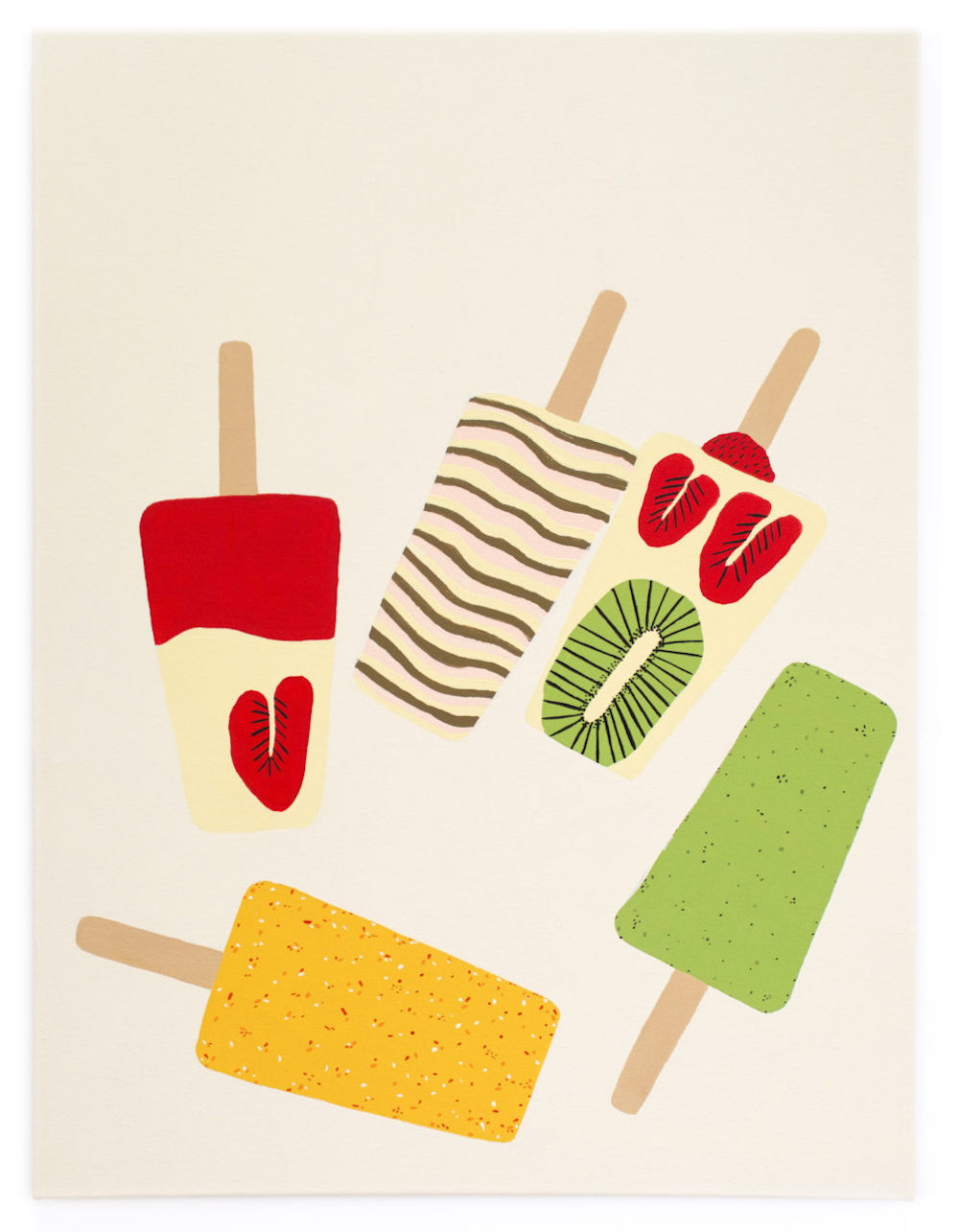
Sunbath. Paletas (Popsicles). Vinyl paint on canvas.
Hernandez also noticed that people became confused if she didn’t fit a stereotype they had in their mind, which triggered her to start thinking about herself differently. “I was wondering—who am I now? Who is this person that I didn’t know I was, but suddenly all these people think I am? I do not feel like I belong here, but I also don’t belong to Mexico anymore, I am left in between, in a nostalgic place that doesn’t exist anymore. I guess that’s why I make my [art] about all these things that only exist in my brain—very specific memories of my childhood, the neighborhoods as they were when I lived here, the food I used to eat, how I used to be. My work is about the things that make up who I truly am.”
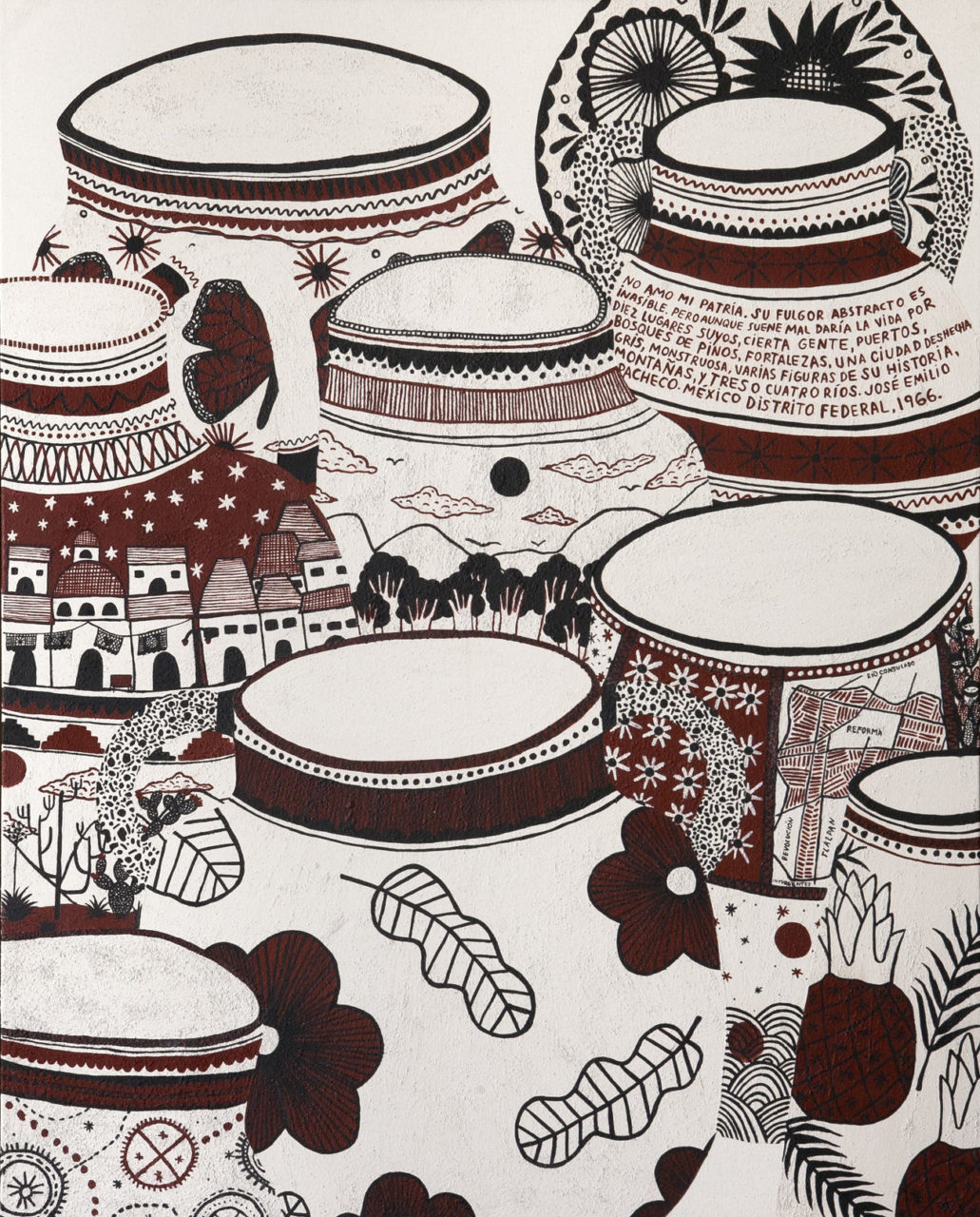
Flower Vessels. Alta Traición (High Treason). Clay and vinyl paint on raw canvas.
The current political climate on immigration has affected Hernandez deeply, but she admits it’s never as powerful as her seeing people desperately in need of asylum. Currently dealing with a long immigration process, Hernandez hasn’t been able to leave the country for two years. “Leaving to visit my family would mean I’m abandoning my application to become a resident. It has made me really homesick and prevented me from spending time with my family and my grandma, who is my constant inspiration. Her influence was huge on the work of my last two art shows.”
Trying to balance filing immigration paperwork and continuing her art has taken an emotional and financial toll on Hernandez. “I had to learn so much about immigration processes, payments, filing times, work permits; and whenever I talk to people about it no one knows the reality of what the immigration system looks like.”
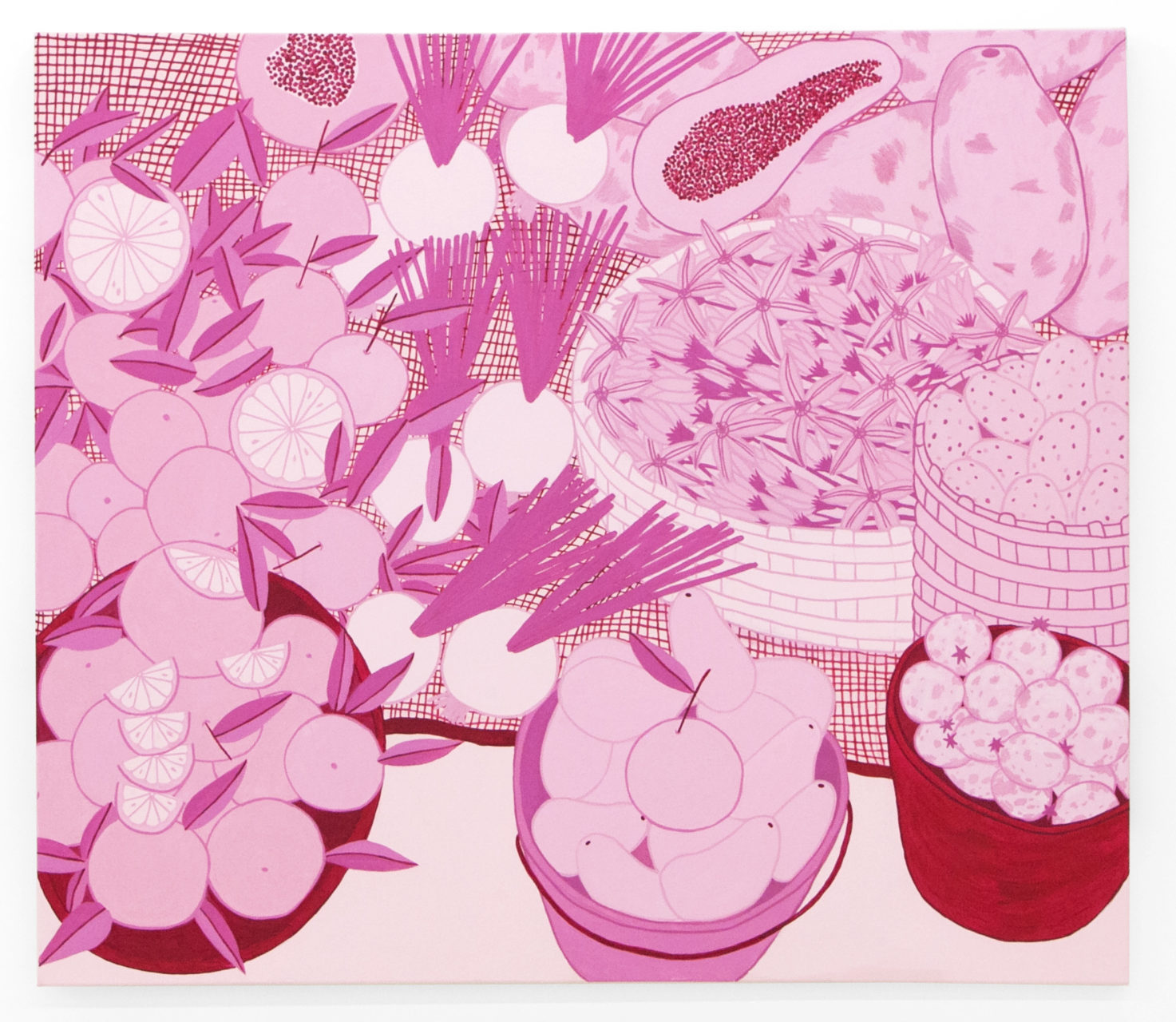
Provisions. Bajo la luz rosa del Tianguis 3 (Under the market’s pink light 3). Acrylic and Flashe on Canvas. 2018.
It’s difficult to feel inspired while being in constant fear that a single mistake could cost her ability to stay in the U.S. She turns to her family here, her husband Whelan, who provides both emotional and artistic support collaborating with her on creative efforts. “Ryan and I met each other at an art exhibit in 2014. When I first saw some of his work, the first thing I thought was, ‘That totally looks like something I would do.’ I saw myself in his work. It was crazy.” That admiration and friendship led to marriage and an artistic collaboration. “For some people, it’s really difficult to work with their significant other. I wouldn’t say working together is easy, but we found our way. We have our differences and sometimes we just don’t get what the other is trying to do until the very last minute when we see each other’s vision come to life. It’s very rewarding at the end!”
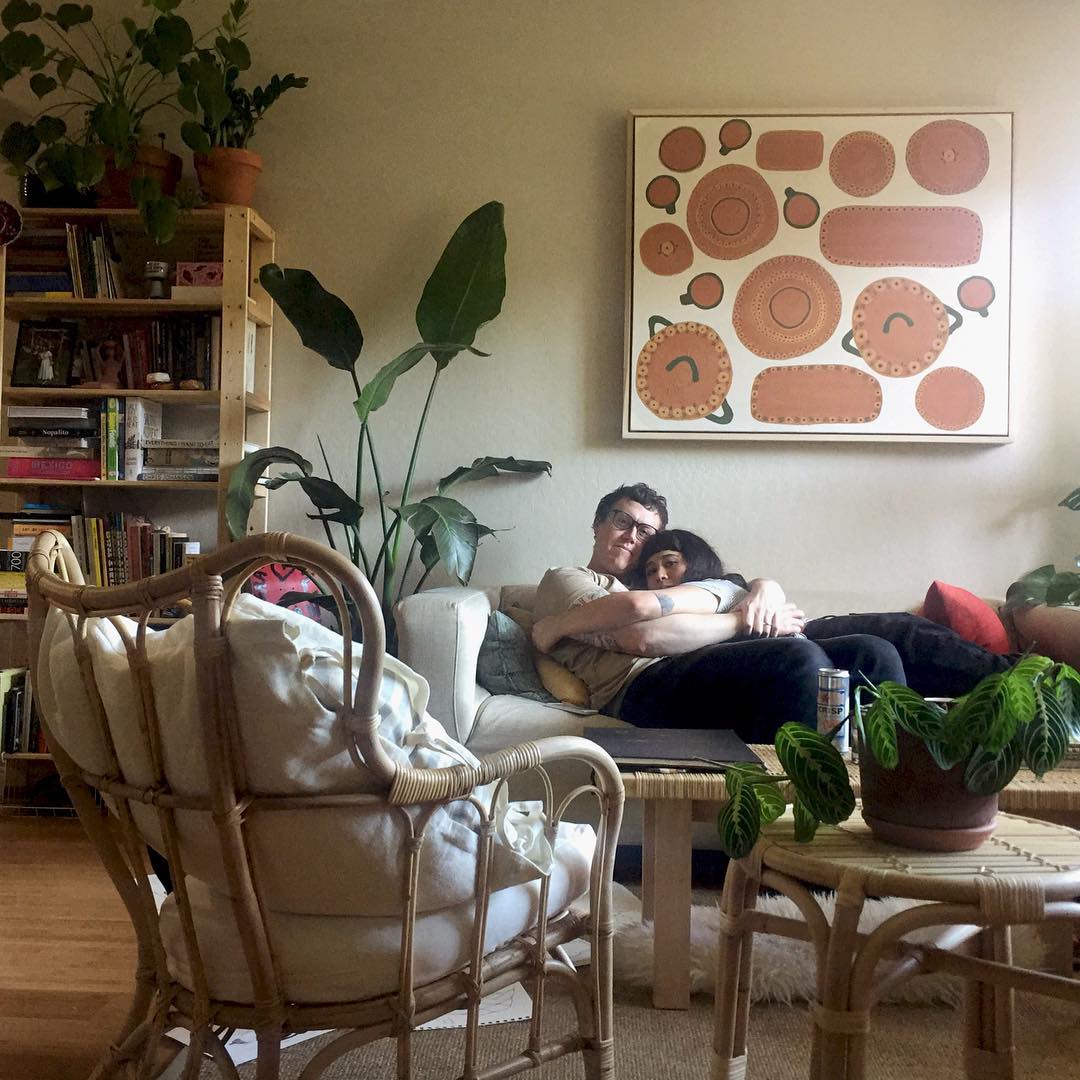
“We are working on our third art show together and somehow we still love each other very much.” (via @prettydisappointing)
Advice and The Future
Learning from her artist journey thus far, Hernandez divulges that she was afraid of making mistakes, taking herself too seriously. “I would get anxious and just give up before even trying anything new. Now I think errors are a critical part of my art practice and my life. It’s okay to make mistakes and acknowledging that takes away a lot of pressure from you, suddenly there is no need to be perfect.” Work-life balance is another area she’s focused on. Whereas before she was unable to separate her work from her life since it was so personal, now she finds time for balance. “I see no division between life and art, but I encourage everyone to separate your life and the idea of being productive 24/7.”
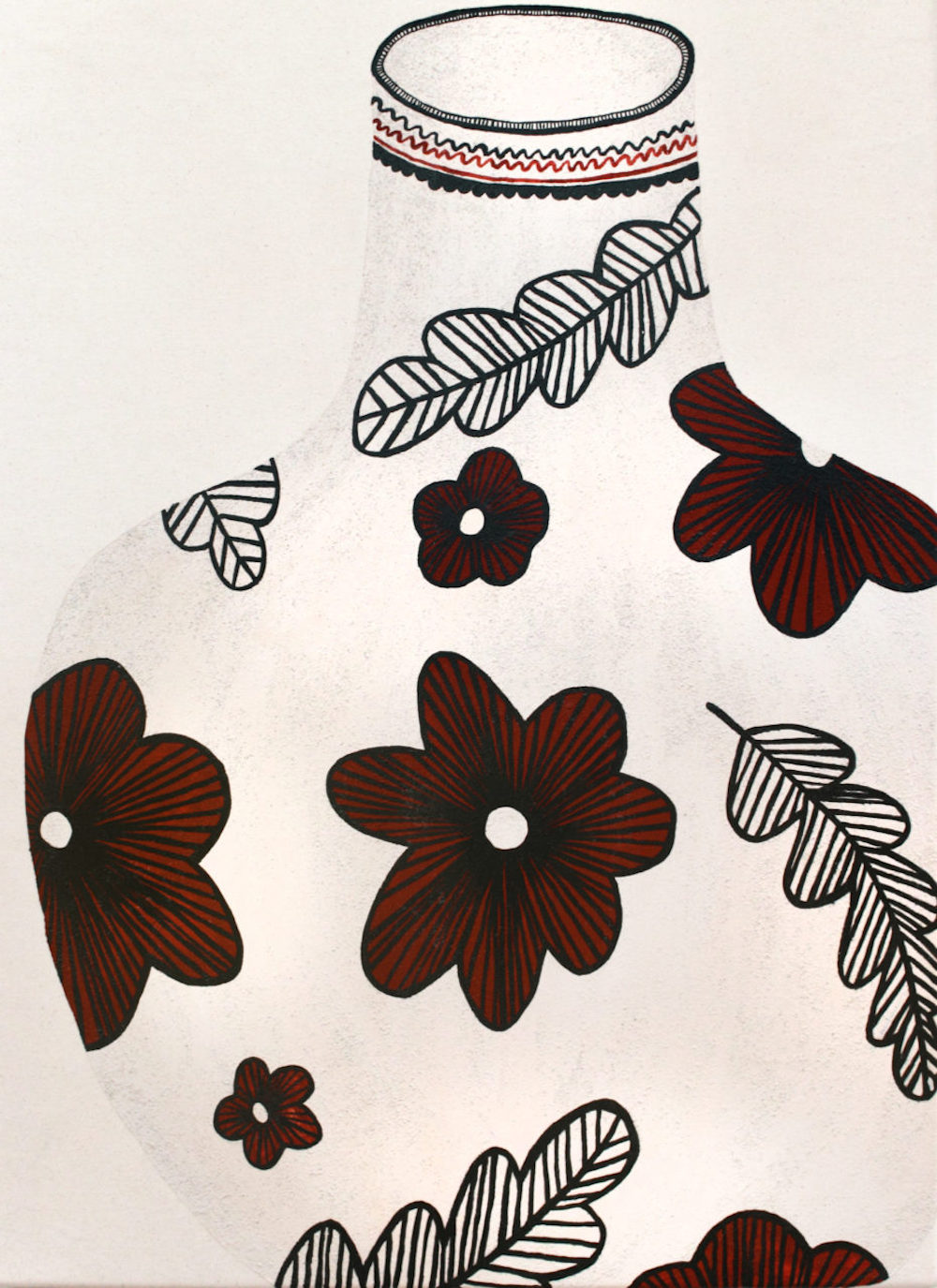
Flower Vessels. Artifact II. Clay and vinyl paint on raw canvas.
Currently, she is working on ceramic sculptures she’d originally planned for the Provisions show—pink sculptures that relate to the previous roseate paintings—and considering how she will want to present. Taking a break from clay paintings and larger shows, her goal is to focus on completing an entire body of work and then find a place to show, rather than booking out an exhibit months in advance. For 2019, she will create on her terms, pressure-free.
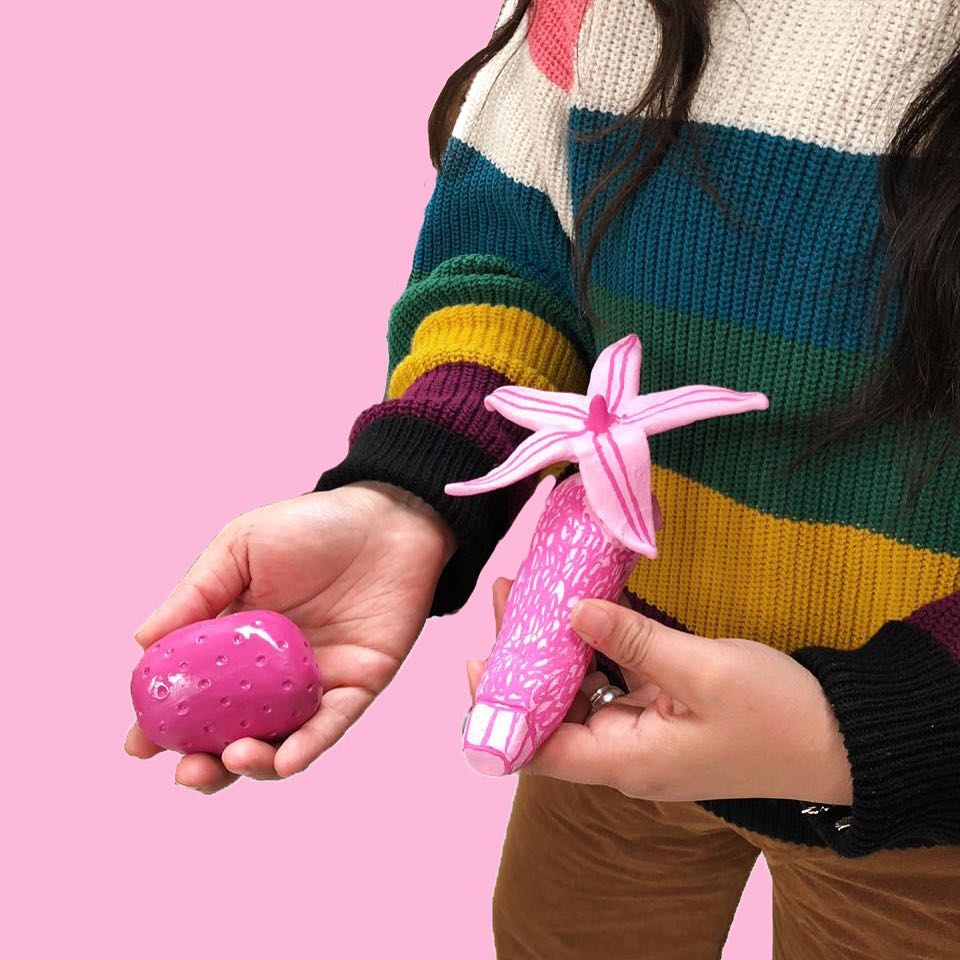
Some of Hernandez’s new sculptures. (via @prettydisappointing)

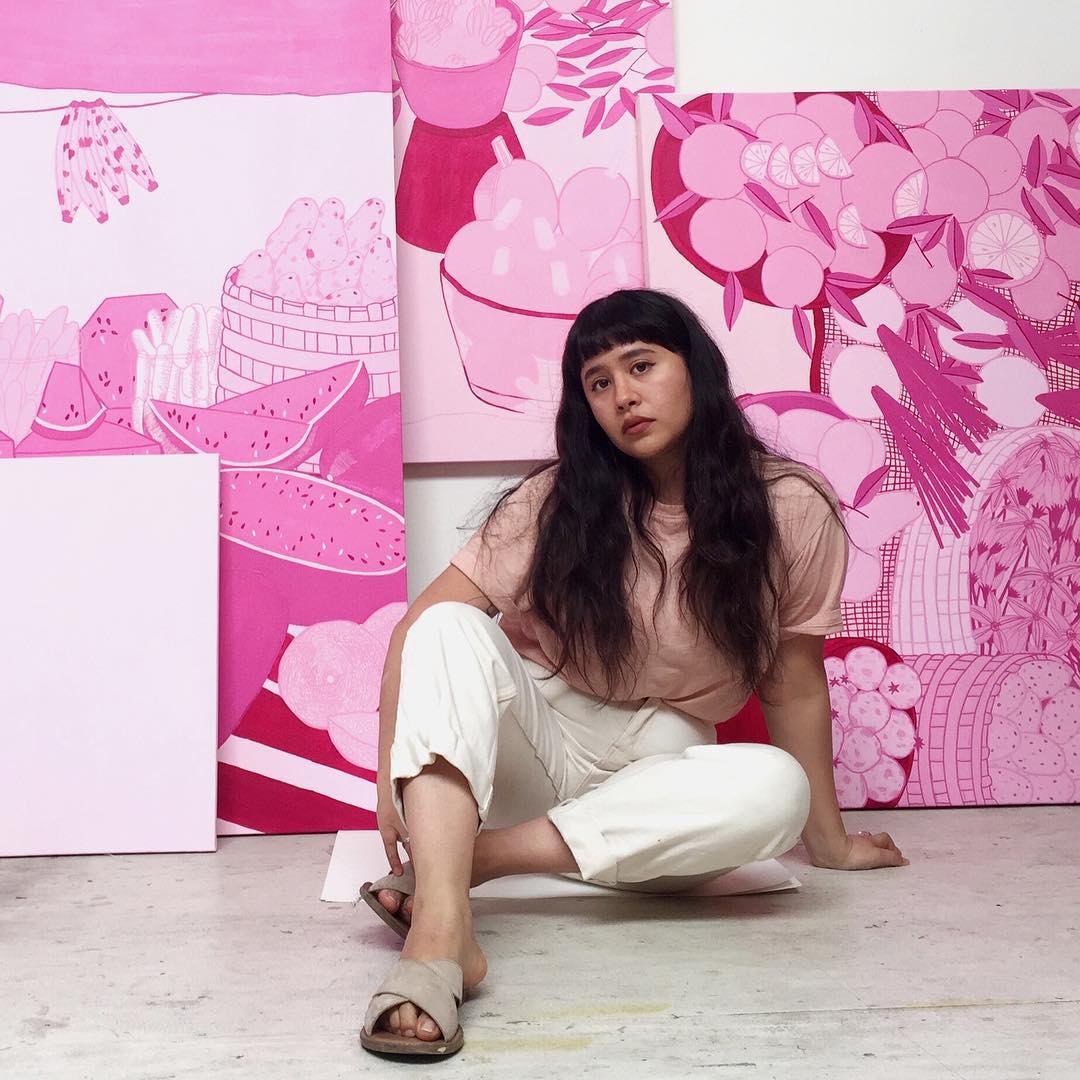





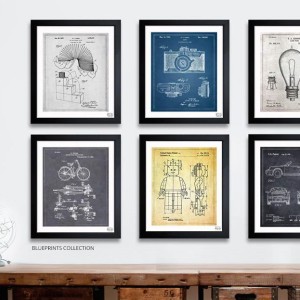
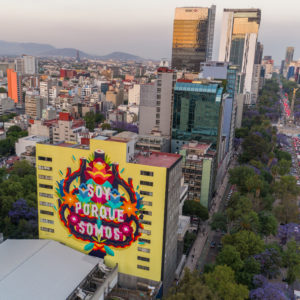
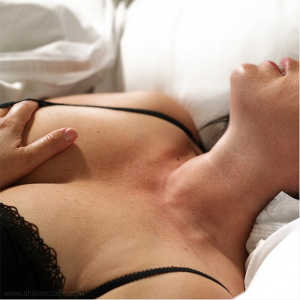
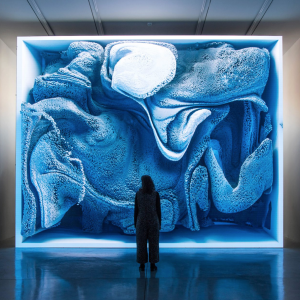
Leave a reply